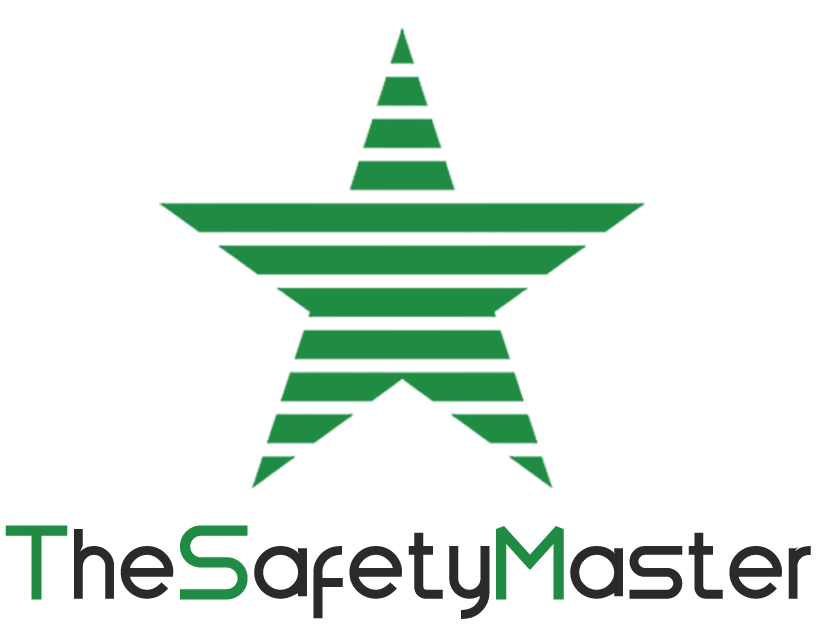Comprehensive Guide to IS 14489: Safety Audit Checklist and Standards

HAZOP vs HAZID Study: A Comparative Guide to Hazard Identification in Industry
June 11, 2025
How to Calculate Fire Load: Formula, Method, and Importance Explained
July 4, 2025Introduction
IS 14489 is a crucial standard developed by the Bureau of Indian Standards (BIS), specifically designed to guide safety audits across various industries. This standard provides a comprehensive framework for conducting safety audits, helping businesses evaluate their safety protocols and ensure compliance with legal and regulatory requirements. Safety audit checklist as per IS 14489 offers a detailed guide for auditors to systematically assess workplace hazards and safety practices.
The significance of IS 14489 in safety audits cannot be overstated. It plays a pivotal role in identifying potential risks, ensuring that safety measures are up to date, and mitigating accidents or workplace injuries. By following the guidelines outlined in the audit checklist, companies can maintain a proactive approach to risk management. This process is essential not only for complying with safety regulations but also for fostering a safe working environment for employees. Through regular audits as per IS 14489, organizations can enhance their safety culture and avoid costly legal liabilities.
Understanding IS 14489 and Its Purpose
- What is IS 14489?
- IS 14489 is a standard developed by the Bureau of Indian Standards (BIS) that provides a structured methodology for conducting IS 14489 safety audits.
- It serves as a guide for businesses to evaluate their safety systems and ensure compliance with safety regulations.
- IS 14489 is a standard developed by the Bureau of Indian Standards (BIS) that provides a structured methodology for conducting IS 14489 safety audits.
- Purpose of IS 14489:
- The standard aims to identify potential hazards and assess the effectiveness of safety protocols within the workplace.
- It ensures that safety measures are aligned with legal and regulatory requirements, helping organizations proactively manage risks.
- The standard aims to identify potential hazards and assess the effectiveness of safety protocols within the workplace.
- How IS 14489 Contributes to Workplace Safety:
- By following the IS 14489 safety audit, companies can identify safety gaps and implement corrective actions.
- It helps organizations reduce accidents, injuries, and potential legal liabilities, promoting a safer working environment.
- By following the IS 14489 safety audit, companies can identify safety gaps and implement corrective actions.
- Scope and Applicability of IS 14489:
- IS 14489 applies to various industries, including manufacturing, construction, healthcare, hospitality, and more.
- The audit framework is flexible, allowing customization based on the size and nature of the organization.
- Whether for small offices or large industrial plants, IS 14489 provides a universal approach to safety audits, ensuring industry-wide safety compliance.
- IS 14489 applies to various industries, including manufacturing, construction, healthcare, hospitality, and more.
Key Components of the Safety Audit Checklist as Per IS 14489
The safety audit checklist as per IS 14489 is a comprehensive tool designed to evaluate safety protocols and identify potential risks in the workplace. It covers various key elements, ensuring that all safety aspects are thoroughly assessed. Here’s a breakdown of the crucial components:
- 1. Equipment Safety:
- The checklist reviews the condition and safety features of machinery, tools, and equipment. It ensures that equipment is regularly maintained, properly installed, and free from defects.
- IS 14489 alignment: This element ensures compliance with industry standards for equipment safety, including proper guarding, preventive maintenance, and hazard-free operation.
- The checklist reviews the condition and safety features of machinery, tools, and equipment. It ensures that equipment is regularly maintained, properly installed, and free from defects.
- 2. Environmental Conditions:
- The audit checklist evaluates the physical environment of the workplace, including lighting, ventilation, noise levels, and temperature. These factors significantly influence employee health and comfort.
- IS 14489 alignment: IS 14489 emphasizes the importance of a conducive working environment that minimizes risks such as fatigue, eye strain, and respiratory issues.
- The audit checklist evaluates the physical environment of the workplace, including lighting, ventilation, noise levels, and temperature. These factors significantly influence employee health and comfort.
- 3. Employee Safety Measures:
- The checklist assesses personal protective equipment (PPE) usage, safety signage, and employee training. It ensures that workers are equipped with the knowledge and tools to work safely.
- IS 14489 alignment: The standard mandates regular safety training and proper PPE usage, aiming to reduce the risk of workplace accidents and ensure that employees adhere to safety practices.
- The checklist assesses personal protective equipment (PPE) usage, safety signage, and employee training. It ensures that workers are equipped with the knowledge and tools to work safely.
- 4. Emergency Preparedness:
- This section of the checklist examines the readiness of the workplace in case of emergencies such as fires, chemical spills, or electrical hazards. It includes emergency exits, first-aid kits, and evacuation procedures.
- IS 14489 alignment: IS 14489 stresses the need for a clear, well-communicated emergency response plan, regular drills, and accessible emergency equipment to ensure that employees know how to act in critical situations.
- This section of the checklist examines the readiness of the workplace in case of emergencies such as fires, chemical spills, or electrical hazards. It includes emergency exits, first-aid kits, and evacuation procedures.
- 5. Health and Hygiene Practices:
- The audit evaluates cleanliness, sanitation, and waste disposal methods within the workplace to prevent the spread of infections and other health hazards.
- IS 14489 alignment: IS 14489 supports maintaining high standards of hygiene and cleanliness to ensure the overall well-being of employees.
- The audit evaluates cleanliness, sanitation, and waste disposal methods within the workplace to prevent the spread of infections and other health hazards.
By systematically addressing these key elements, the safety audit checklist as per IS 14489 helps ensure that all potential risks are identified, mitigated, and properly managed, fostering a safe and compliant working environment.
Steps Involved in Conducting a Safety Audit According to IS 14489
Conducting a safety audit as per IS 14489 involves a series of well-defined steps to ensure that all aspects of workplace safety are thoroughly evaluated and managed. Below is an outline of the key phases:
1. Planning and Preparation Phase
- Objective: Establish the scope and objectives of the safety audit.
- Action Steps:
- Identify the areas to be audited, such as equipment, employee safety, environmental conditions, and emergency preparedness.
- Gather relevant documentation, such as previous audit reports, safety policies, and risk assessments.
- Develop a detailed plan outlining the audit process, team members, timelines, and key areas of focus.
- Identify the areas to be audited, such as equipment, employee safety, environmental conditions, and emergency preparedness.
- IS 14489 Alignment: This phase ensures that the audit is structured according to the IS 14489 safety audit guidelines, ensuring comprehensive coverage of all safety aspects.
2. Conducting the Audit: Inspection, Observation, and Data Collection
- Objective: Perform a detailed review of the workplace to identify potential hazards.
- Action Steps:
- Inspection: Physically examine the equipment, workplace layout, and safety installations.
- Observation: Observe employee practices, safety behaviors, and adherence to protocols.
- Data Collection: Collect data on safety-related incidents, equipment performance, and compliance with safety regulations.
- Inspection: Physically examine the equipment, workplace layout, and safety installations.
- IS 14489 Alignment: The audit must be thorough, with a focus on all safety aspects, ensuring that all conditions are assessed in line with IS 14489 recommendations.
3. Analyzing Findings and Implementing Corrective Actions
- Objective: Review the findings and identify areas for improvement.
- Action Steps:
- Analyze the data collected during the audit to identify trends, potential risks, and non-compliance with safety standards.
- Prioritize findings based on severity and potential impact on employee safety.
- Develop an action plan with specific corrective measures, timelines, and responsible personnel.
- Analyze the data collected during the audit to identify trends, potential risks, and non-compliance with safety standards.
- IS 14489 Alignment: This step adheres to the IS 14489 safety audit process by ensuring that identified hazards are addressed promptly, with a focus on corrective actions and risk reduction.
4. Final Reporting and Ensuring Continuous Monitoring
- Objective: Document the audit results and ensure ongoing safety improvements.
- Action Steps:
- Prepare a detailed audit report outlining the findings, corrective actions, and any recommendations for continuous improvement.
- Share the report with management and relevant stakeholders.
- Implement a follow-up plan to monitor the effectiveness of corrective actions and ensure continued compliance.
- Prepare a detailed audit report outlining the findings, corrective actions, and any recommendations for continuous improvement.
- IS 14489 Alignment: The final reporting phase complies with IS 14489 by ensuring transparency, accountability, and a system for ongoing safety monitoring.
By following these structured steps, businesses can conduct a safety audit as per IS 14489 effectively, ensuring a safer and more compliant workplace.
Conclusion
In conclusion, conducting safety audits based on IS 14489 is crucial for maintaining a safe and compliant workplace. The safety audit checklist as per IS 14489 ensures that all key safety elements—ranging from equipment safety to emergency preparedness—are thoroughly evaluated and addressed. By following these guidelines, businesses can identify risks, prevent accidents, and improve overall safety standards.
Regular audits not only help in complying with safety regulations but also create a culture of continuous improvement. Ensuring ongoing safety through audits as per IS 14489 is essential to protect employees, reduce costs, and boost productivity. Therefore, businesses must prioritize these audits for long-term safety and success.




